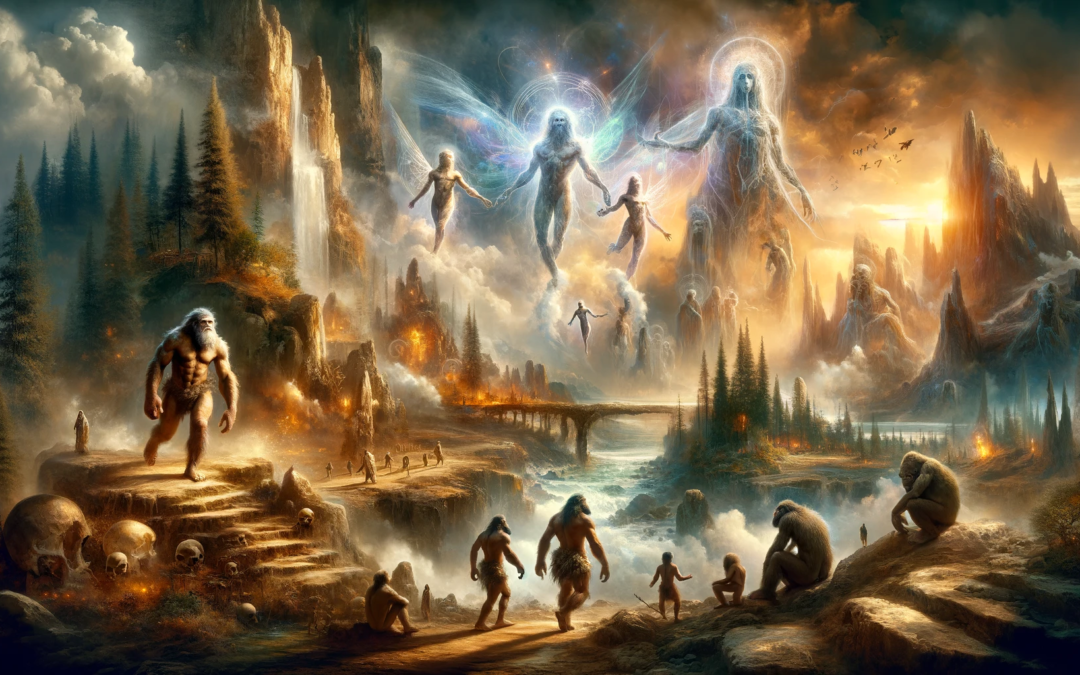In the vast and often mysterious expanse of human history, few subjects have captivated the imagination as much as the origins and stories of ancient peoples. Among these, the Neanderthals and the Nephilim stand out — one, a well-documented species closely related to modern humans, and the other, a group of beings shrouded in myth and religious texts.
A fascinating, albeit controversial, theory posits that Neanderthals might be the offspring of the Nephilim. This article delves into this theory, exploring its roots, implications, and the intertwining of science with mythology.
Unraveling the Tapestry of Ancient Lore
To understand this theory, one must first delve into the enigmatic references to the Nephilim. Found in ancient texts, including the Bible, the Nephilim are often described as the offspring of “the sons of God” and “the daughters of men.” These beings are depicted as giants or mighty warriors, surrounded by a halo of mystery and supernatural attributes.
In contrast, the Neanderthals were very much real, a species of archaic humans who roamed Europe and parts of Asia. Scientific evidence paints a picture of a species with distinct physical characteristics and cultural practices. They coexisted with early modern humans and eventually became extinct around 40,000 years ago.
Bridging Myth and Science
The theory linking Neanderthals to the Nephilim weaves a narrative that attempts to bridge gaps between scientific discovery and ancient myths. Proponents suggest that the descriptions of the Nephilim align with some characteristics observed in Neanderthal remains, such as their robust build and potentially formidable strength.
This theory hypothesizes that the Nephilim could have been a real, perhaps genetically distinct group, whose traits were passed down to the Neanderthals. It’s a theory that dances on the edges of scientific plausibility and mythological storytelling. Those in favor argue that ancient texts might hold truths about our past that science has yet to fully understand or uncover. Skeptics, however, caution against conflating myth with empirical evidence, emphasizing the lack of concrete proof linking these mythical beings with the Neanderthals.
Ethical and Philosophical Considerations
The exploration of such theories is not just a matter of scientific curiosity; it touches on deeper ethical and philosophical questions. By investigating the connections between myth and science, we delve into the human need to understand our origins and our place in the cosmos.
It challenges us to consider the boundaries of scientific inquiry and the role of ancient narratives in shaping our understanding of the world.
The Ongoing Quest for Understanding
In conclusion, the theory of Neanderthals being the offspring of the Nephilim offers an intriguing, if controversial, perspective on our ancient past. It represents the human yearning to find connections, to weave together the strands of myth, legend, and science into a coherent narrative of our history.
While currently more a subject of speculation than scientific consensus, it invites us to keep an open mind and to continue exploring the rich tapestry of human history, wherever it may lead. In our quest to understand the past, we are reminded that sometimes the lines between myth and reality are not as clear as we might think, and that in the shadows of what we know, there lies much that we have yet to discover.










